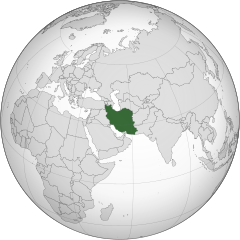Rząd tymczasowy Iranu
| 1979 | |||||
| |||||
| Hymn: Ey Iran[1] (Oh Iranie!) | |||||
| Stolica | |||||
|---|---|---|---|---|---|
| Data powstania |
11 lutego 1979 | ||||
| Data likwidacji |
6 listopada 1979 | ||||
| Premier | |||||
| Powierzchnia |
1 648 000 km² | ||||
| Waluta |
Rial (﷼) | ||||
| Język urzędowy | |||||
| Religia dominująca | |||||
Położenie na mapie
| |||||

Irański Rząd Tymczasowy – pierwszy rząd utworzony po irańskiej rewolucji islamskiej. Na czele reżimu stał Mehdi Bazargan, jeden z członków Ruchu Wolności Iranu[2] został utworzony na rozkaz Ruhollaha Chomejniego 4 lutego 1979 r. Od 4 do 11 lutego Bazargan i Szapur Bachtijar (ostatni premier) twierdzili, że są prawowitymi głowami rządu; Bachtijar uciekł 11 lutego[3].
Przypisy
- ↑ Sanam Zahir (2008), The Music of the Children of Revolution: The State of Music and Emergence of the Underground Music in the Islamic Republic of Iran with an Analysis of Its Lyrical Content, ISBN 978-0-549-89307-3, A contrast to these two anthems is the song that was used during the revolution of 1979 as the de facto national anthem of the transition period. This song, Ey Iran is argued here...
- ↑ Reza Safa (2006). The Coming Fall of Islam in Iran: Thousands of Muslims Find Christ in the Midst of Persecution. Charisma Media. p. 78. ISBN 978-1-59185-988-8.
- ↑ Mir M.Hosseini. "February, 5, 1979 A.D.: Bazargan Becomes Prime Minister". The Iranian history article. Retrieved 17 July 2016.

